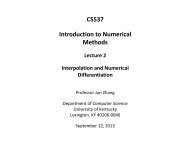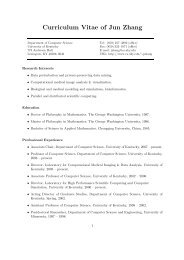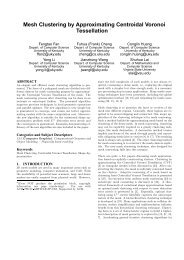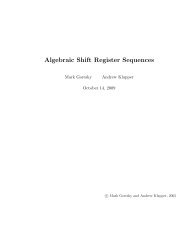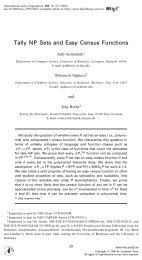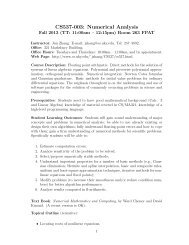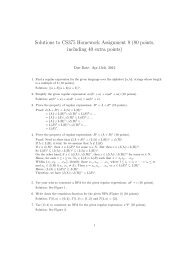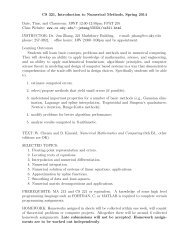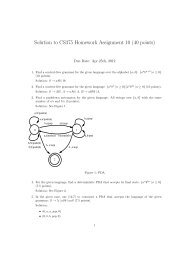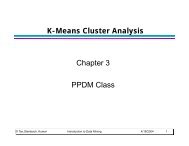Lecture 4 - Computer Science Department - University of Kentucky
Lecture 4 - Computer Science Department - University of Kentucky
Lecture 4 - Computer Science Department - University of Kentucky
Create successful ePaper yourself
Turn your PDF publications into a flip-book with our unique Google optimized e-Paper software.
We have<br />
Example 2<br />
+ 2<br />
3<br />
a h<br />
h h<br />
∫ f<br />
( x<br />
) dx = hf<br />
( a<br />
) +<br />
f '(<br />
a<br />
) +<br />
f "(<br />
a<br />
) +L<br />
3!<br />
(1)<br />
a<br />
2<br />
We can also apply the Taylor series directly on f(t) as<br />
2<br />
3<br />
(2)<br />
h h<br />
f<br />
( a<br />
+ h<br />
) =<br />
f<br />
( a<br />
)<br />
+<br />
hf<br />
'( a<br />
)<br />
+<br />
f<br />
"( a<br />
)<br />
+<br />
f<br />
"'( a<br />
)<br />
+L<br />
2 3!<br />
Adding f(a) on both sides <strong>of</strong> (2) and multiplying it by h/2, we obtain<br />
(3)<br />
h<br />
[<br />
2<br />
2<br />
3<br />
h<br />
h<br />
f ( a)<br />
+ f ( a+<br />
h)]<br />
= hf(<br />
a)<br />
+ f '( a)<br />
+ f "( a)<br />
+L<br />
2 4<br />
Subtracting (3) from (1), we finally get<br />
a<br />
∫ + h h<br />
1 3<br />
f ( x)<br />
dx−<br />
[ f ( a)<br />
+ f ( a+<br />
h)]<br />
=− h f"(<br />
a)<br />
+L<br />
a<br />
2<br />
12<br />
20



